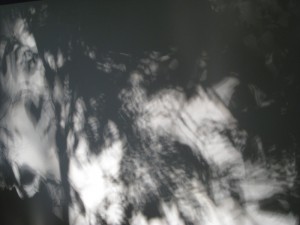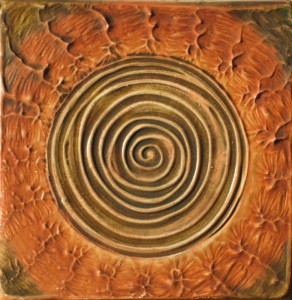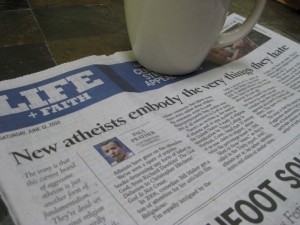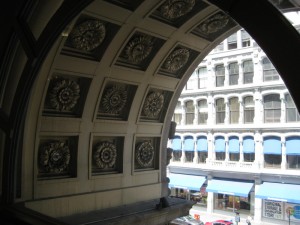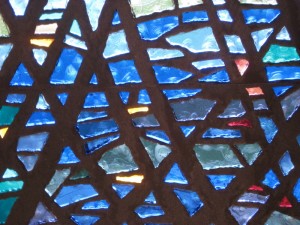A couple of days ago I noticed some interesting shadows in the evening light. The setting sun cast images of swaying trees and silhouettes of dancing leaves into the house. The most picturesque shadows were on the kitchen wall, below a board full of mementos. I set it up years ago to display children’s art work, but in more recent years it has held newspaper clippings, photos, and memorabilia from their activities. I wanted to get a picture of the light and shadow on the wall, but once I had my camera I realized there was too much clutter in the frame. Posters, newsprint, and a handkerchief hanging from the bottom of the board interfered with getting a good shot, so I quickly removed them before the light changed. I ended up with something kind of interesting:
I’ve been meaning to dismantle that board for over a year. Its role has passed. I’m still proud of my young adult children and their accomplishments, but it’s not about displays. The newspaper is yellowed, the medals are dusty, and the whole thing has been there, unchanged, for so long that no one even sees it any more. But the job I had been putting off—what do I do with all that stuff when I take it down, anyway?—is now underway.
It’s not an insurmountable job to remove the miscellany and open up the wall space, but it does mark the end of an era. Actually, the era has already ended and I’m just now catching up. The board was a simple and effective treatment for an abundance of artwork: a piece of matboard with clothespins glued to it, held on the wall with thumbtacks. It’s still in good shape. If you live nearby and need a way to display your children’s creativity, I’ll be happy to give it to you.
It feels odd to get rid of something that’s been part of the furniture for so many years. On the other hand, it will open up a lot of wall space. There’s something exhilarating about clearing out the old and making room for the new. I’ll enjoy the open space.
I wonder what will go there next.

